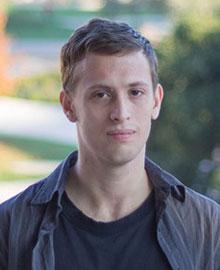
Graduate Student
Research Interests:
My primary research interest is to increase the speed and efficiency of density function theory (DFT) calculations through the application of machine learning techniques, with a particular focus on applications to high-throughput screening and large databases. This interest has led to several projects over my graduate school career.
Previous projects:
- The creation of systematic correction schemes in order to cheaply improve the accuracy of DFT calculations. The corrections are primarily linear in nature, though more complex/higher-order schemes were investigated. Machine learning techniques were used to investigate and prevent overfitting, specifically for the more complex schemes. It was found that the simple model forms investigated were very general, applicable across a wide variety of materials properties, and offering about a 30 % improvement (with especially good performance for oxide formation energies), depending on the functional and property considered. The schemes offered the additional benefit of greatly reducing the functional variation, bringing all of the GGAs and mGGAs close together in performance.
- A method to determine ideal setting parameter sets for a given calculation type given a test database. In general, the selection of calculation convergence parameters is made in a pretty ad-hoc manner, leading to inefficiencies in time spent or in overall accuracy, inefficiencies which can have a large effect when considering very large databases. By investigating a simple benchmark database we can determine different settings 'tier' sets, for a user-specified number of tiers, taking into account calculation time and accuracy. These sets appear to be applicable across different calculation types and materials as long they are in the same vein as the test set.
Current project:
- Using machine learning techniques in order to speed up transition state search methods. Transition state energies are an essential ingredient in determining good reaction rate estimates, but find good transition state structures and energies is generally a very expensive and difficult task. My goal is to use machine learning approaches to provide better and cheaper transition state structure estimates. These could be interfaced with a variety of different methods (e.g. cNEBs) in order to speed them up. As this project is still early, I plan to investigate and benchmark a number of these methods, with the goal of creating a time/accuracy method hierarchy, much in the same vein as my setting parameters project. The use of ML techniques to estimate potential energy surfaces, leading to faster strucural relaxations is another avenue I plan to explore.
Contact information
Email:
Phone:
650-926-2073
